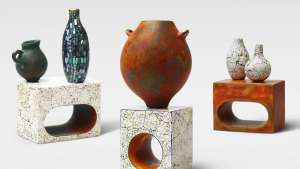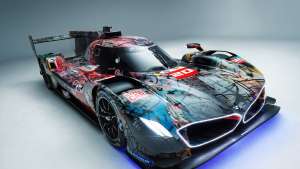
A new medical device, called the Growing Spine Dynamic (GSDyn) is both minimally invasive and adaptable. It has been created to help doctors correct spinal deformities in children – a very specialised area in healthcare and where children often need multiple surgeries as their bodies grow.
Created by 3D Biochemical Technician Alba Alvarez, the Growing Spine Dynamic (GSDyn) is a rod-like device that was created not only to treat children with severe spinal deformities, but to make that treatment easier and safer.
A more severe case of scoliosis in adulthood can be prevented by correcting a spinal deformity in childhood. According to the National Scoliosis Foundation, the medical condition is most common in children aged 10 to 15 and, if it's not treated early enough, its fast progression can be crippling.

The level of scoliosis is defined by the degree of curvature of the spine. Currently, children are treated in a variety of complex ways. Surgery to correct severe spinal deformity presents a number of risk factors, according to Munish Gupta, a researcher and paediatric surgeon at the Department of Orthopedics, Washington University, St. Louis, in the US.
Speaking at the Global Spine Congress in Singapore in May this year, he presented research that pointed to a 12 percent instrument-related complication rate following surgical treatment for severe paediatric deformities. This means that numerous paediatric patients were likely to have several corrective surgeries before the desired results could be achieved.
Alvarez, who has a PhD in Spinal Implants from the University of Birmingham, is aware of the risk factors involved in the challenging surgeries that doctors such as Gupta undertake.
“The most common complications that occur are implant-related problems (such as rod fractures) and skin infections due to several surgeries being performed over the course of the treatment,” she says. “Therefore, the design of a better device was needed in this niche area.”

Alvarez worked with a multidisciplinary team consisting of spinal orthopaedic surgeons, an industrial company and mechanical engineers to create a high-performance growing rod device.
Alvarez’s GSDyn is inserted through a small incision in the child’s back where it is placed on the curved spine. It is anchored to the ribs, the vertebrae or both, by way of hooks or screws. Its shape is dependent on the curve of the spine.
Like other growing rod devices, it is periodically lengthened by a medical professional – this process gradually straightens the spine. The difference is that the elongation method is not as invasive as the procedures used around the world thanks to its racked-rod and pinion self-locking system.
This means that all surgeons need to do to elongate the device is to insert a surgical tool into a small incision in the child’s back. When turned clockwise, the surgical tool elongates the device and self-locks, facilitating the procedure.
There are currently five working GSDyn prototypes in development and Alvarez plans to continue her research into the field.
“Once the mechanical testing data has been assessed and further results confirmed, our collaborative surgeons are willing to start a clinical trial,” she adds.
Read more on medical innovation:
Low-cost medical device detects pneumonia quickly and effectively
How two researchers hacked software to create a functional AI for their diabetic son
Low-cost artificial leg for amputees in developing countries




